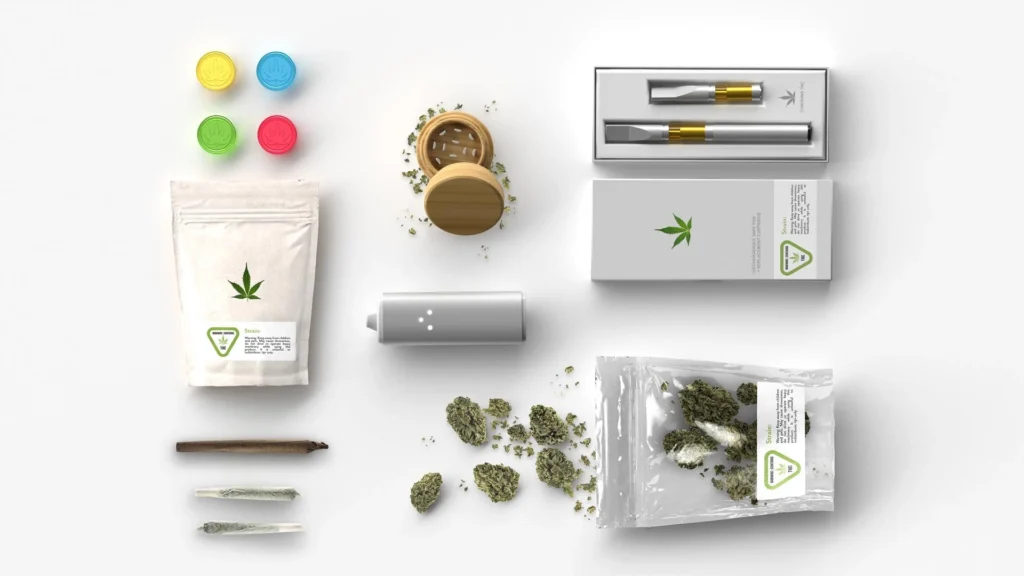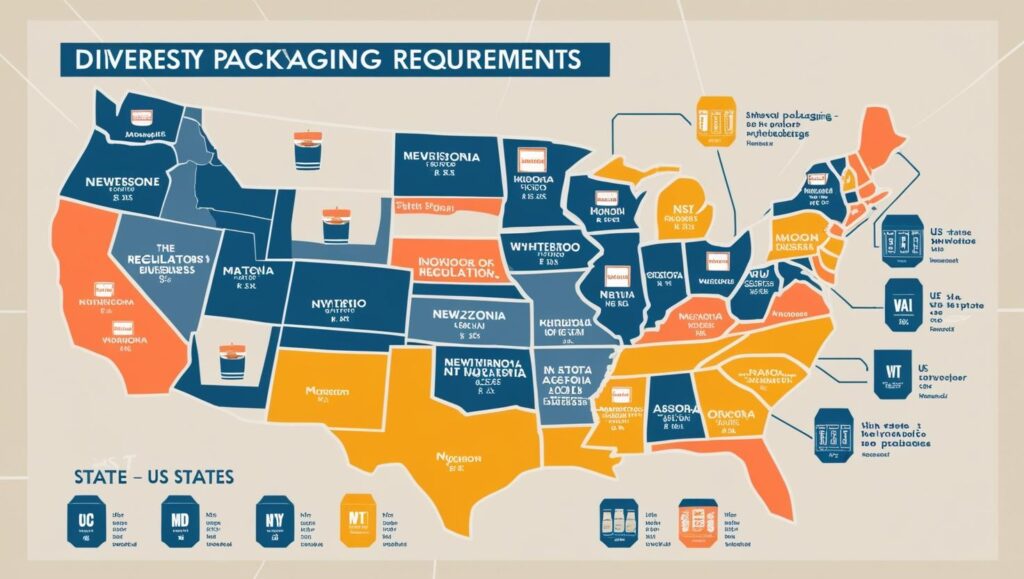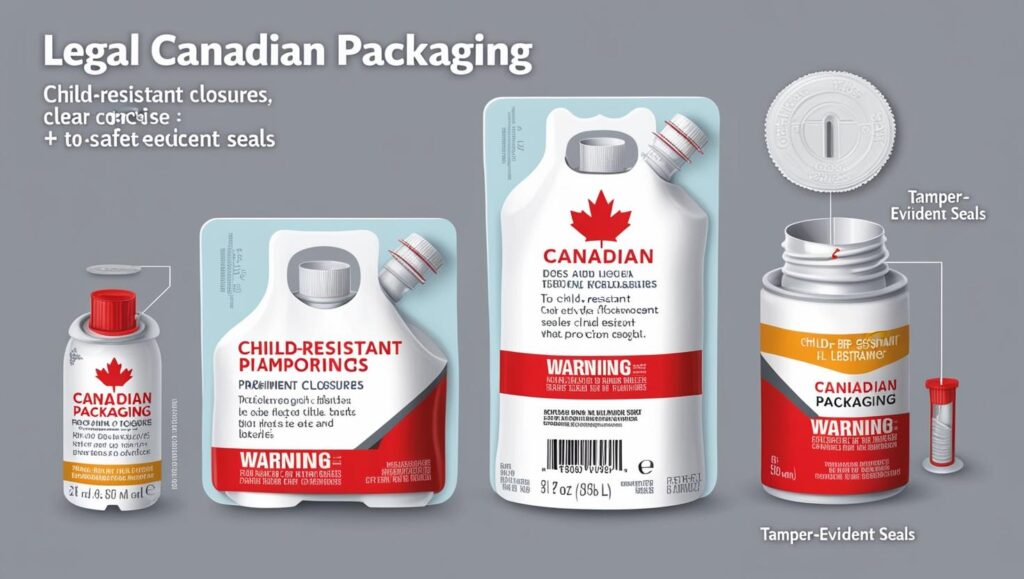
Choosing the right cannabis packaging1 is crucial for maintaining the product's quality and aroma. It can make or break your cannabis brand’s appeal.
The right packaging for cannabis flower2 preserves its freshness and potency. It helps avoid degradation from air, moisture, and light, ensuring the product stays in top condition.
As the cannabis industry grows, understanding the importance of packaging becomes vital. Let’s explore the different factors that contribute to quality preservation through packaging.
What is cannabis packaging?
Packaging protects cannabis from harmful elements like air, light, and moisture, ensuring the flower remains fresh and potent for longer periods.
Cannabis packaging includes various materials designed to shield the product from environmental damage, ensuring its quality is maintained throughout storage and transportation.

Types of Cannabis Packaging
Cannabis packaging can vary significantly, and choosing the right type is essential for preserving the product’s freshness. Let’s take a look at some of the most popular options and how they stack up:
| Packaging Type | Key Features | Benefits |
|---|---|---|
| Mylar Bags3 | Airtight, moisture-resistant | Protects against air, light, and humidity, extends freshness |
| Grove Bags4 | Airflow control, moisture-resistant | Prevents mold, maintains aroma, ideal for long-term storage |
| Glass Jars5 | Airtight seal, clear display | Premium feel, reusable, helps build brand identity |
| Eco-friendly Packaging6 | Compostable or recyclable materials | Meets growing consumer demand for sustainability |
The role of cannabis packaging goes beyond just containment. It plays an essential part in maintaining the flower’s quality. The packaging needs to be airtight, moisture-resistant, and lightproof to protect cannabis from factors that could degrade its properties, such as oxidation and exposure to UV rays.
For example, Mylar bags are a common choice due to their ability to block light and air, while Grove Bags, designed to allow optimal airflow, are excellent for preventing mold and maintaining freshness. Both packaging options have their unique benefits, depending on whether you want to preserve the cannabis for short-term or long-term storage.
As more brands emerge, the ability to showcase their identity through creative, branded packaging has become just as important as protecting the product itself.
Custom glass jars, for example, offer a premium look and help consumers perceive the brand’s quality. Meanwhile, eco-friendly packaging is becoming increasingly popular to meet consumer demand for sustainable products.
Recyclable and compostable materials are becoming common alternatives to traditional plastic packaging, aligning with the growing trend of environmentally conscious choices.
These options not only support sustainability but also help brands build a loyal customer base by reflecting their commitment to environmental responsibility.
What is the ideal cannabis packaging?
Cannabis packaging must strike a balance between quality protection and branding, while also complying with legal requirements.
The ideal packaging 7 should maintain cannabis freshness while also reflecting the brand’s identity. It must meet regulatory standards8 and appeal to the consumer visually.

Factors in Ideal Cannabis Packaging
Packaging that protects the product while enhancing its appeal is the sweet spot for cannabis brands. Let’s compare key features that define the ideal cannabis packaging:
| Factor | Importance |
|---|---|
| Protection | Airtight, moisture-resistant, and lightproof to prevent product degradation. |
| Freshness | Packaging that prevents mold and maintains the flower’s flavor and aroma. |
| Branding | Customizable packaging that conveys the brand’s identity to consumers. |
| Sustainability | Eco-friendly materials like recyclable or compostable packaging. |
In my experience, the ideal cannabis packaging is one that perfectly balances functional requirements with branding opportunities.
The packaging needs to ensure that the product remains fresh, potent, and free from contamination. At the same time, it should look appealing and communicate the brand’s values.
For instance, Mylar bags provide excellent protection, but as the cannabis market grows, brands are increasingly opting for glass jars to create a more luxurious image. Glass jars provide an airtight seal that keeps the cannabis fresh while offering the opportunity to showcase beautiful branding. They are also reusable, which appeals to environmentally conscious consumers.
Meanwhile, eco-friendly packaging options like recyclable or compostable materials are on the rise. Brands are recognizing that sustainability is not just a trend but an important factor for long-term customer loyalty. Consumers are becoming more mindful of the environmental impact of the products they purchase, and cannabis brands that embrace eco-conscious packaging solutions can stand out in a competitive market.
Additionally, there is growing interest in packaging that enhances the cannabis experience—whether it's odor-proof bags, unique designs, or products that promote sustainability. The ideal packaging solution provides both practical benefits and a compelling brand narrative that resonates with consumers.
What are the packaging requirements for cannabis in different states of the USA?
Cannabis packaging laws differ across states, with regulations designed to ensure safety, transparency, and compliance in the marketplace.
State-specific regulations dictate the design, labeling, and materials used in cannabis packaging, ensuring safety and providing consumers with accurate information about the product.

Packaging Requirements by State
Different states have different packaging regulations that cannabis products must comply with. Below is a comparison of packaging requirements across some key states:
| State | Key Packaging Requirements |
|---|---|
| California9 | Child-resistant, clear labeling of THC content, strain details |
| Colorado10 | Tamper-evident, child-resistant, health warnings |
| Oregon11 | Packaging must be opaque, child-resistant |
| Michigan12 | Strain details, potency labeling, tamper-evident |
Packaging requirements for cannabis in the USA vary significantly from state to state. These regulations are designed to protect consumers and ensure that cannabis is marketed responsibly.
For instance, in California, cannabis packaging must be child-resistant, tamper-evident, and include clear labeling that specifies THC content, strain information, and health warnings. Similarly, Colorado requires tamper-evident packaging, and some states mandate that packaging be opaque to prevent degradation of the product from light exposure.
In addition to safety requirements, many states have specific labeling rules that include dosage information and health warnings. These rules are critical in ensuring that consumers are well-informed and that the cannabis product meets all legal requirements.
Companies must stay up to date with these state-specific regulations to avoid potential fines or legal issues. As the cannabis industry grows and state laws evolve, keeping track of the packaging requirements in each state is a crucial part of a successful cannabis business strategy.
Brands that comply with these regulations not only avoid legal troubles but also build trust with consumers by demonstrating their commitment to safety and transparency.
What is the legal packaging for cannabis in Canada?
In Canada, cannabis packaging laws are strict, ensuring both product safety and consumer awareness through clear labeling and child-resistant features.
Legal packaging in Canada includes child-resistant features, clear labeling, and tamper-evident seals to ensure cannabis is stored and sold safely to consumers.

Legal Packaging Features in Canada
Here are the key packaging requirements for legal cannabis in Canada9:
| Requirement | Description |
|---|---|
| Child-resistant | Packaging must be child-resistant to prevent unauthorized access. |
| Tamper-evident | Packaging must show clear signs of tampering. |
| Clear labeling | Labels must include THC/CBD content, health warnings, and product origin. |
| Opaque or sealed | Packaging must prevent contamination from light or air. |
In Canada, the packaging of cannabis products is regulated by Health Canada10,with strict rules designed to ensure that products are safe for consumers.
Legal cannabis packaging in Canada must include child-resistant features to prevent minors from accessing the products. Additionally, the packaging must be tamper-evident, which helps ensure that the product has not been altered or opened before purchase.
The labeling must be clear and include essential information such as THC and CBD content, strain details, health warnings, and product origin. These regulations are in place to protect consumers and ensure that cannabis products are sold responsibly.
Additionally, the packaging must be opaque or sealed to prevent contamination from light and air, which can degrade the quality of the cannabis. With these strict regulations in place, Canadian cannabis brands are required to invest in packaging solutions that meet these standards while also creating an appealing brand image.
For companies looking to enter the Canadian market, understanding and adhering to these packaging regulations is essential for success and compliance.
Conclusion
The right cannabis packaging not only preserves product quality but also meets legal requirements, enhances brand appeal, and builds consumer trust.
-
Learn why choosing the right packaging is essential for maintaining cannabis quality and aroma. ↩
-
Discover how proper cannabis packaging helps preserve its freshness and potency. ↩
-
Find out how Mylar bags protect cannabis from light, air, and moisture, extending its freshness. ↩
-
Learn how Grove Bags optimize airflow and prevent mold, ideal for long-term cannabis storage. ↩
-
Understand why glass jars are a premium choice for cannabis packaging and brand identity. ↩
-
Explore the rise of sustainable packaging in the cannabis industry and its consumer appeal. ↩
-
Discover the role of cannabis packaging in maintaining freshness while showcasing branding. ↩
-
Find out the regulatory standards cannabis packaging needs to comply with. ↩
-
Learn about California’s cannabis packaging requirements, including child-resistant and labeling standards. ↩ ↩
-
Explore Colorado’s specific cannabis packaging regulations, including tamper-evident features and health warnings. ↩ ↩
-
Discover the packaging requirements in Oregon, including opaque and child-resistant packaging rules. ↩
-
Find out Michigan’s cannabis packaging regulations, including strain details and tamper-evident features. ↩

